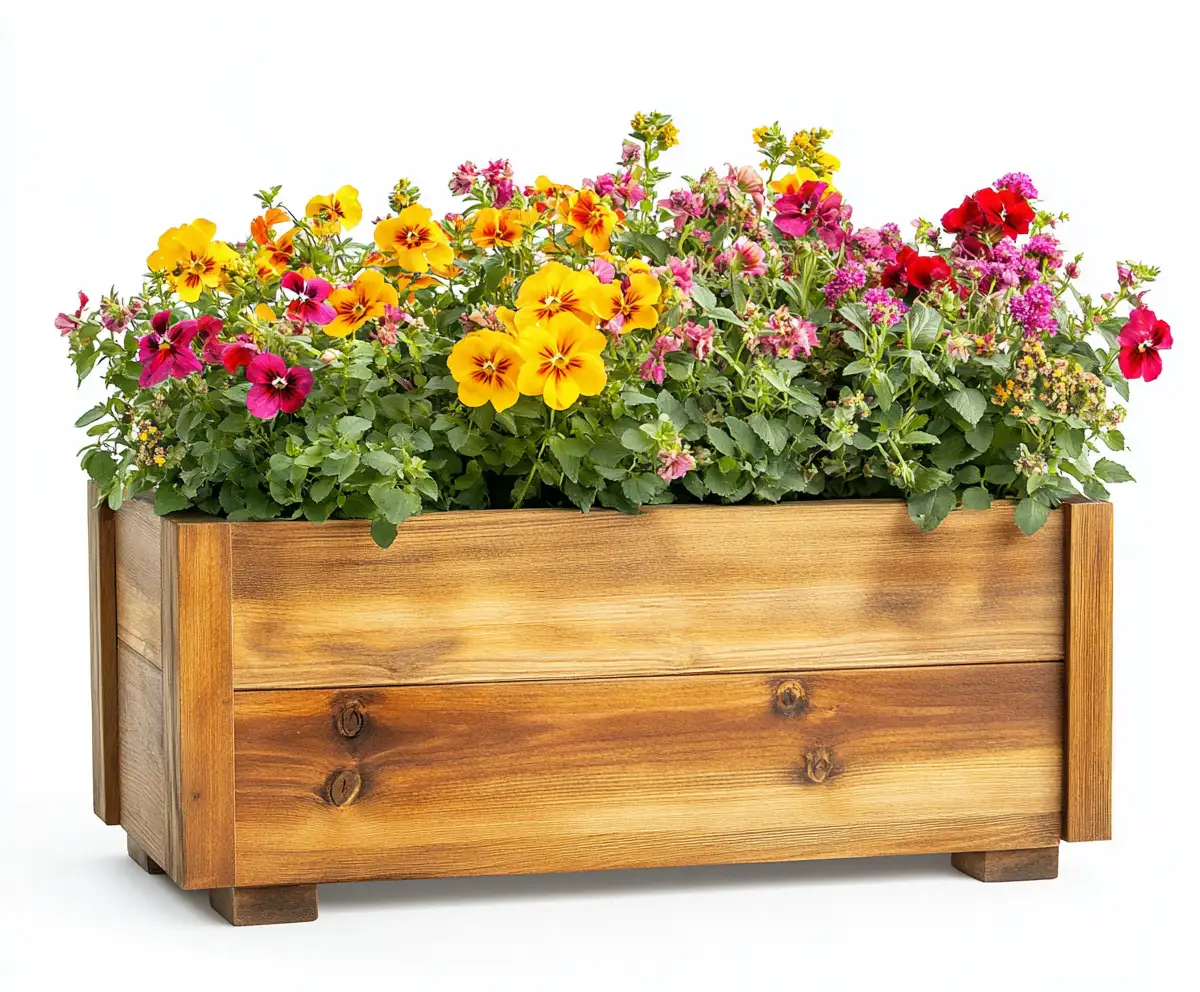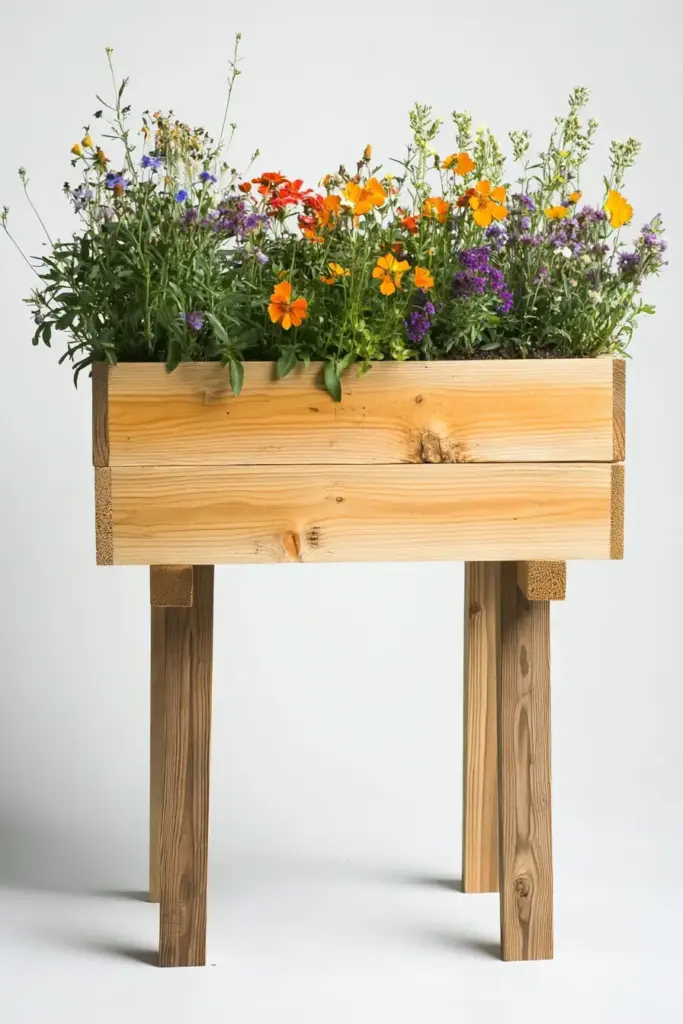If you think your patio, balcony, or backyard is too small for gardening—think again! Planter boxes are one of the easiest and most rewarding ways to grow vegetables, herbs, and flowers in compact spaces. Whether you’re a city dweller with limited outdoor room or simply looking for a more accessible way to garden, planter boxes offer flexibility, charm, and productivity.
In this guide, we’ll walk you through five essential tips for gardening in planter boxes that will help you grow a thriving, beautiful mini-garden—no matter where you live.
🪵 Choosing the Right Materials for Your Planter Boxes
When it comes to planter boxes, not all materials are created equal. Your choice affects not only the look and feel of your garden but also the durability and performance of your setup over time. Here are some popular materials you can consider, along with their benefits:
🌲 Wood: A Classic, Natural Look
Wooden planter boxes are a timeless favorite for their rustic charm and ease of customization. Cedar, redwood, and cypress are top choices thanks to their natural resistance to rot and pests. These hardwoods age beautifully and can last for years with minimal upkeep.
- Pros: Eco-friendly, easy to DIY, breathable for roots
- Cons: May require occasional sealing or treatment
🪨 Concrete or Composite Stone
If you’re looking for a modern, long-lasting option, concrete planters are tough to beat. They’re weather-resistant, sturdy, and add a contemporary flair to outdoor spaces.
- Pros: Extremely durable, low maintenance
- Cons: Heavier and harder to move
🧱 Metal: Sleek and Stylish
Galvanized or powder-coated metal planters offer a sleek look that works well in both urban and rustic settings. Many newer designs incorporate wood-and-metal combos for a stylish twist.
- Pros: Modern appearance, pest-resistant
- Cons: Can heat up quickly in full sun, which may affect plant roots
🧺 Pro Tip:
If you’re repurposing an item like a watering trough or basin, make sure it has drainage holes. We’ll talk more about drainage next!
🌿 Why Planter Box Gardening Works Wonders
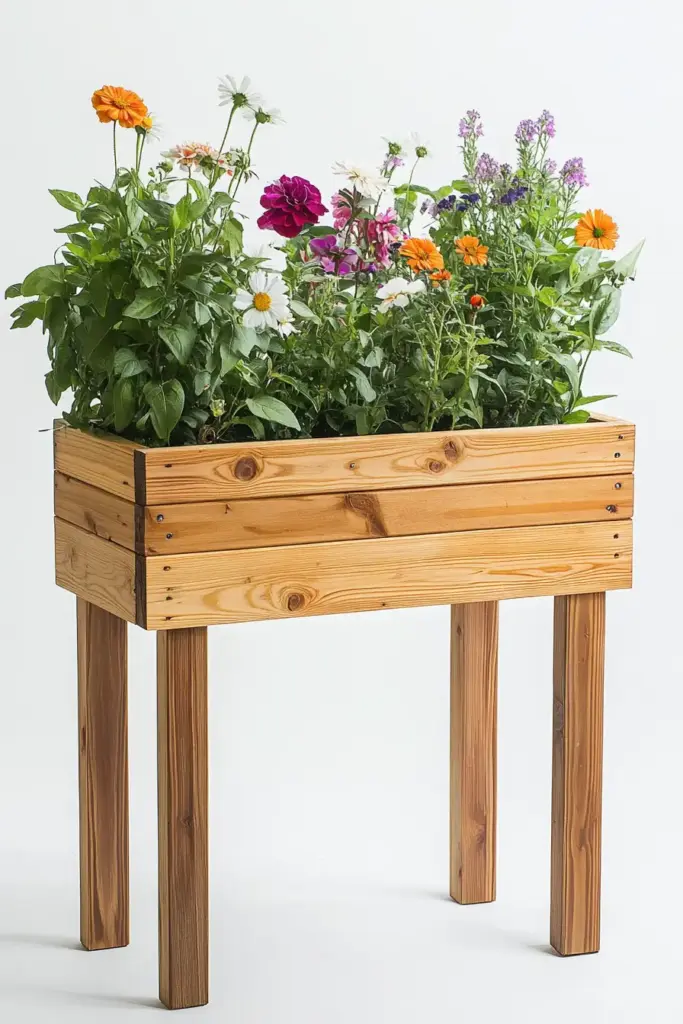
Planter boxes aren’t just a space-saving solution—they’re also incredibly versatile and beginner-friendly. Here’s why more and more gardeners are turning to elevated boxes for growing everything from salad greens to strawberries:
🏡 Perfect for Small Spaces
Have a sunny balcony, patio, or tiny backyard? Planter boxes make it possible to garden almost anywhere. Their compact footprint allows you to fit greenery into tight corners or even arrange them vertically along walls or railings.
🧱 Ideal for Hard Surfaces
Unlike traditional garden beds, planter boxes sit above the ground—meaning you can grow plants on concrete, wood decks, or even rooftops without worrying about damaging surfaces or needing to dig up soil.
🐇 Fewer Pests, Less Hassle
Their elevated height helps keep many ground-dwelling pests like rabbits, voles, and slugs at bay. And since everything is within arm’s reach, spotting and removing harmful insects is much easier.
🦠 Healthier Soil, Healthier Plants
Using a clean, sterile potting mix reduces the risk of soil-borne diseases that can be common in traditional gardens. You’re in full control of what goes into your soil, from organic compost to slow-release fertilizers.
♿ Back-Friendly and Accessible
One of the biggest perks? Less bending and kneeling! Elevated planter boxes are a dream for gardeners with mobility issues or anyone who wants to enjoy gardening without the strain.
🌱 5 Essential Tips for Thriving Planter Box Gardens
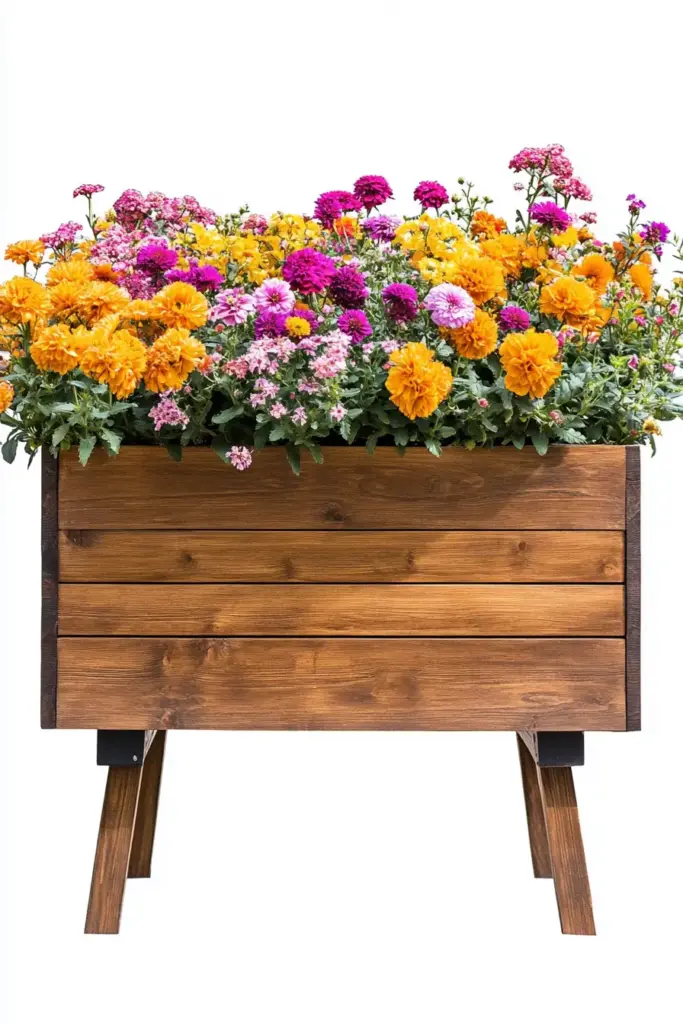
Want to make the most of your planter box setup? Follow these expert-approved tips to ensure your plants grow strong, healthy, and productive all season long.
1. 🧪 Use the Right Soil Mix (Not Just Any Dirt!)
Resist the urge to scoop up garden soil for your planter box—it’s just too heavy and compact. Planter-grown plants need loose, well-draining soil that allows roots to breathe and moisture to flow freely.
✅ What to Use Instead:
- A high-quality potting mix formulated for containers
- Ingredients like coconut coir, perlite, or vermiculite to boost drainage
- Organic matter such as compost to add nutrients
Look for mixes labeled as “container” or “planter-friendly” for the best results.
2. 💧 Ensure Proper Drainage
Planter boxes without good drainage can lead to waterlogged roots and unhappy plants. That’s a fast track to root rot!
💡 Drainage Tips:
- Make sure your planter has holes at the bottom, ideally spaced every 6–9 inches
- For wooden boxes, natural gaps between boards may help, but it’s smart to drill extra holes if needed
- Place a layer of gravel or coarse sand at the bottom to improve water flow
Bonus: Elevating the planter on pavers or pot feet can help water drain even better.
3. 📏 Choose the Right Size Planter Box
Before planting, consider what you’re growing and how deep the roots will go.
📦 Sizing Guidelines:
- Most herbs and leafy greens thrive in boxes that are 8–12 inches deep
- Root vegetables like carrots or potatoes need 12–24 inches
- Wider boxes allow you to grow more, but make sure you can still easily reach the center
If your box is wider than 2 feet, position it so you can access both sides comfortably.
4. ☀️ Place Your Planter in the Best Location
Sunlight makes all the difference in plant growth. Most edible plants need at least 6–8 hours of direct sun daily.
🔍 Location Tips:
- Use a sunlight calculator app to measure light levels on your patio or balcony
- Leafy greens like lettuce or kale tolerate partial shade, especially in hot climates
- Place planters near a water source—you’ll thank yourself during summer heat waves!
Having your garden close to your kitchen? That’s a win for fresh herbs at dinnertime.
5. 🌸 Choose the Right Plants for Planter Boxes
Not all plants are suited to shallow containers—but the good news is, there are tons of varieties bred specifically for patios and small gardens.
🪴 Best Choices for Planter Boxes:
- Compact vegetables: cherry tomatoes, bush beans, dwarf peppers
- Herbs: basil, chives, thyme, parsley
- Greens: lettuce, spinach, arugula
- Fruits: strawberries, dwarf blueberries, raspberries
- Root crops: radishes, baby carrots, garlic
Look for tags or seed packets labeled “patio,” “container,” or “compact” to make selection easy.
🧺 Best Plants to Grow in Planter Boxes
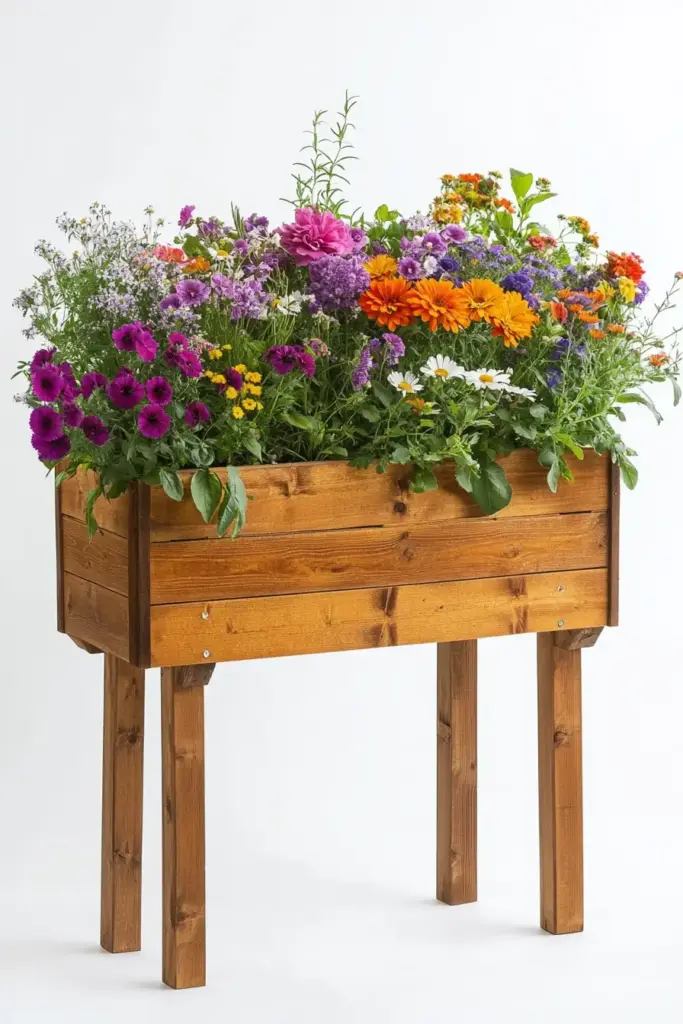
Choosing the right plants for your planter box setup can make the difference between a lush harvest and a garden that struggles. To help you get started, here’s a list of great options—many of which are compact varieties bred specifically for small spaces.
🍅 Top Patio & Compact Varieties
- Tomatoes: Tiny Tim, Tumbler, Red Robin
- Peppers: Hungarian Hot Wax, Right on Red, Ancho
- Cucumbers: Patio Snacker, Spacemaster
- Squash: Bush Baby, Shokichi Green Mini
- Strawberries: Tribute, Rose Berries Galore
- Blueberries: Peach Sorbet, Jelly Bean
- Raspberries: Raspberry Shortcake
- Sweet Potatoes: Vardaman (bush-type)
🥬 Vegetables That Thrive in Shallow Planter Boxes (12–24”)
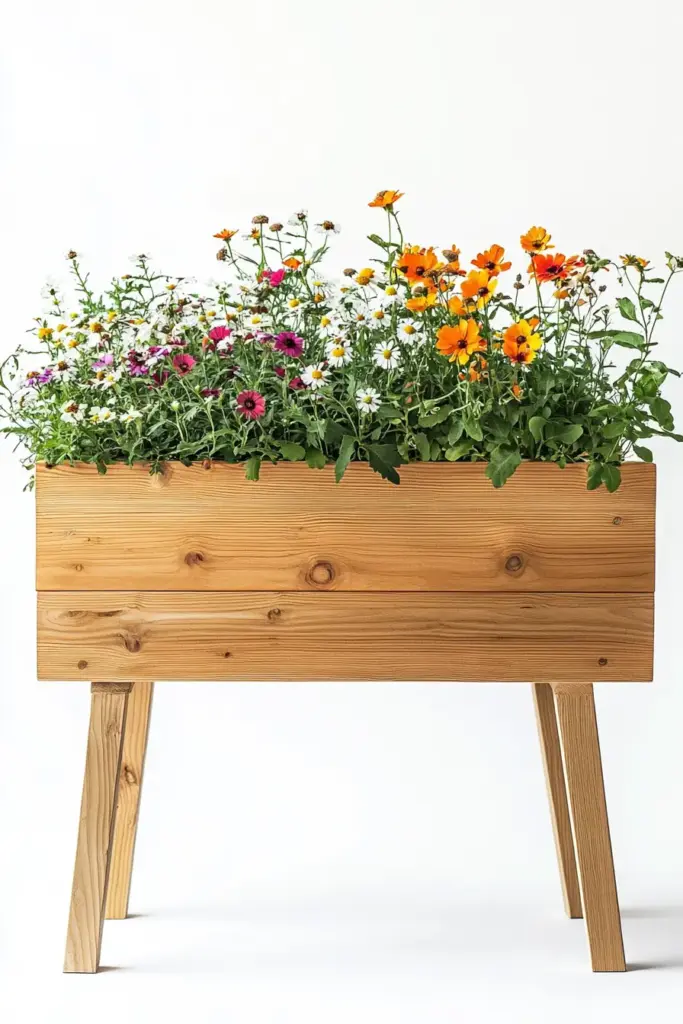
- Arugula
- Basil
- Lettuce
- Kale
- Spinach
- Chives
- Radishes
- Garlic
- Onions
- Bush Beans
- Peas
- Broccoli
- Cabbage
- Eggplant
- Potatoes (use deeper planters)
👩🌾 Pro Tip: Group plants with similar light and water needs together. This helps with maintenance and ensures each plant gets exactly what it needs to thrive.
🌟 Conclusion: Your Garden, Elevated
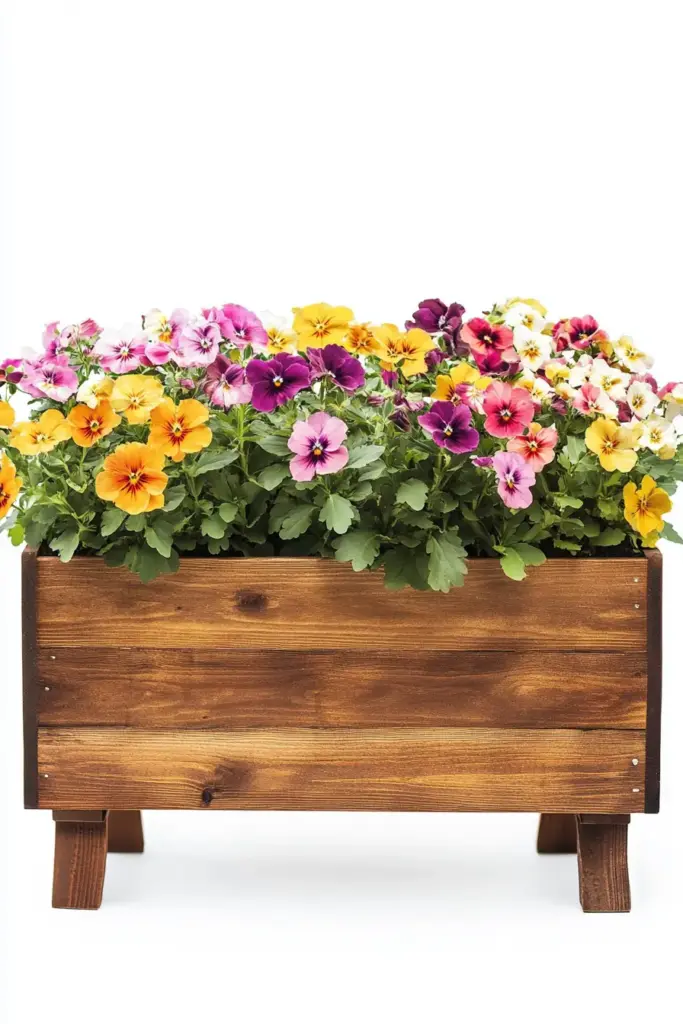
Gardening in planter boxes is more than just a space-saver—it’s a smart, stylish, and satisfying way to grow your own food or flowers almost anywhere. Whether you’re working with a sunny balcony or a concrete patio, these five easy tips will help you create a garden that’s both beautiful and bountiful.
So pick your planter, prep your soil, and start planting. Your lush little garden oasis is just a few steps away.
🌿 Love gardening inspiration? Follow me on Pinterest for bold plant ideas, tips, and seasonal color!
More Posts
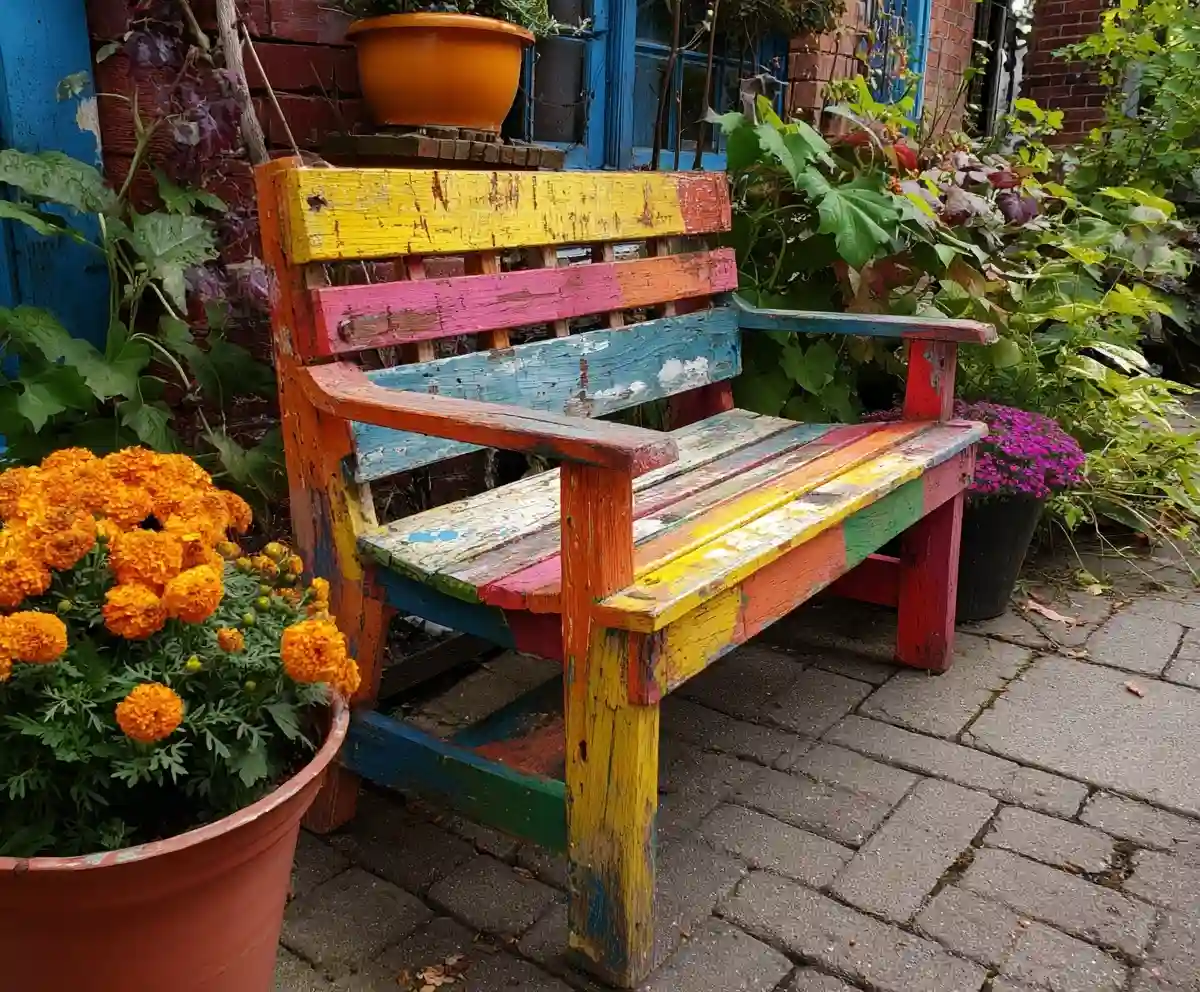
19+ Budget-Friendly Backyard Makeover Ideas
Backyard makeover ideas can turn even the most ordinary outdoor space into a warm, inviting retreat—without draining your wallet.
Read More →
21 Stunning & Simple DIY Clematis Trellis Designs
DIY clematis trellis designs are a beautiful way to blend creativity with function in your garden.
Read More →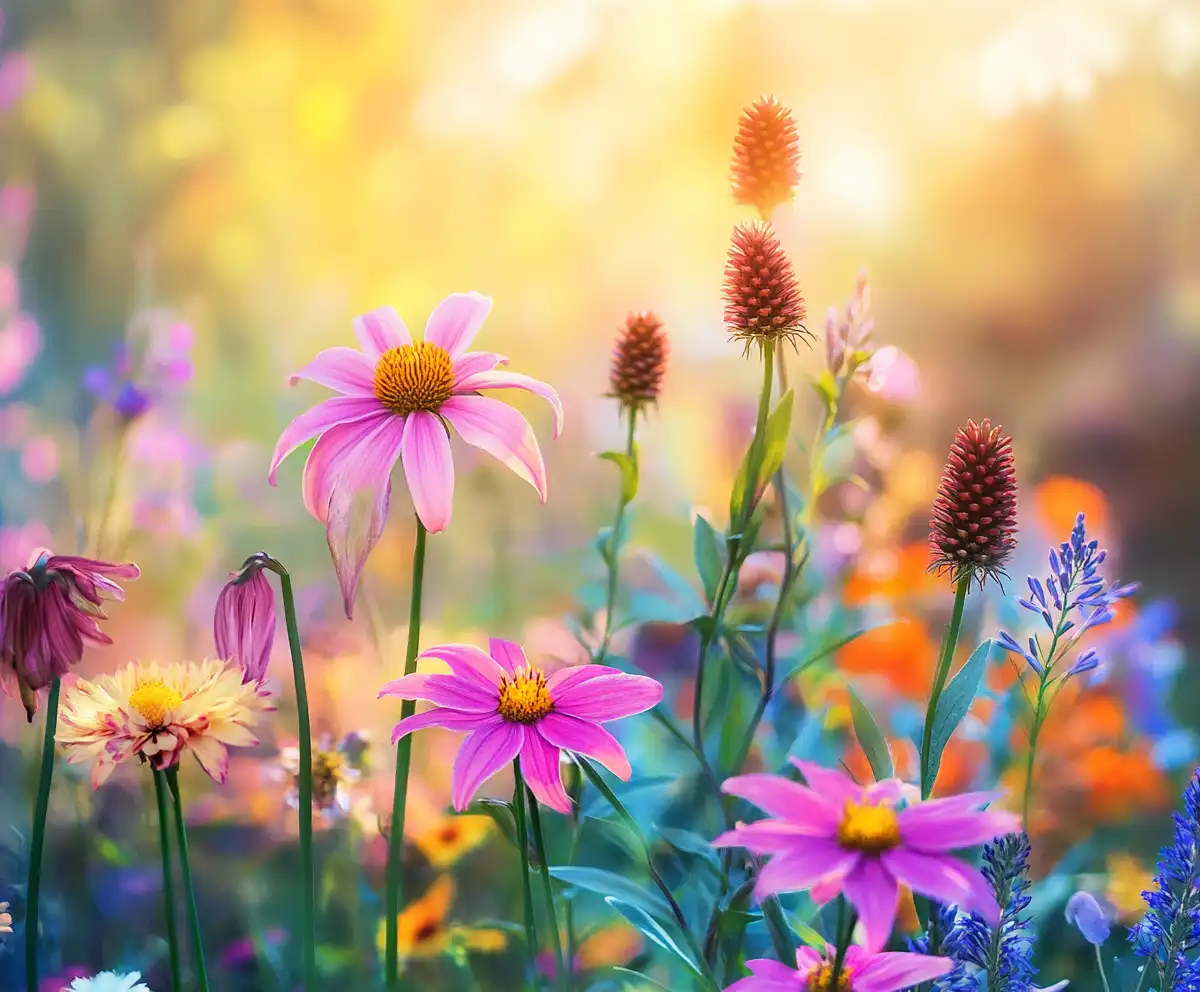
12 Full Sun Perennials That Bloom All Summer
Explore a selection of hardy perennials that flourish and bloom beautifully in full sun throughout the summer.
Read More →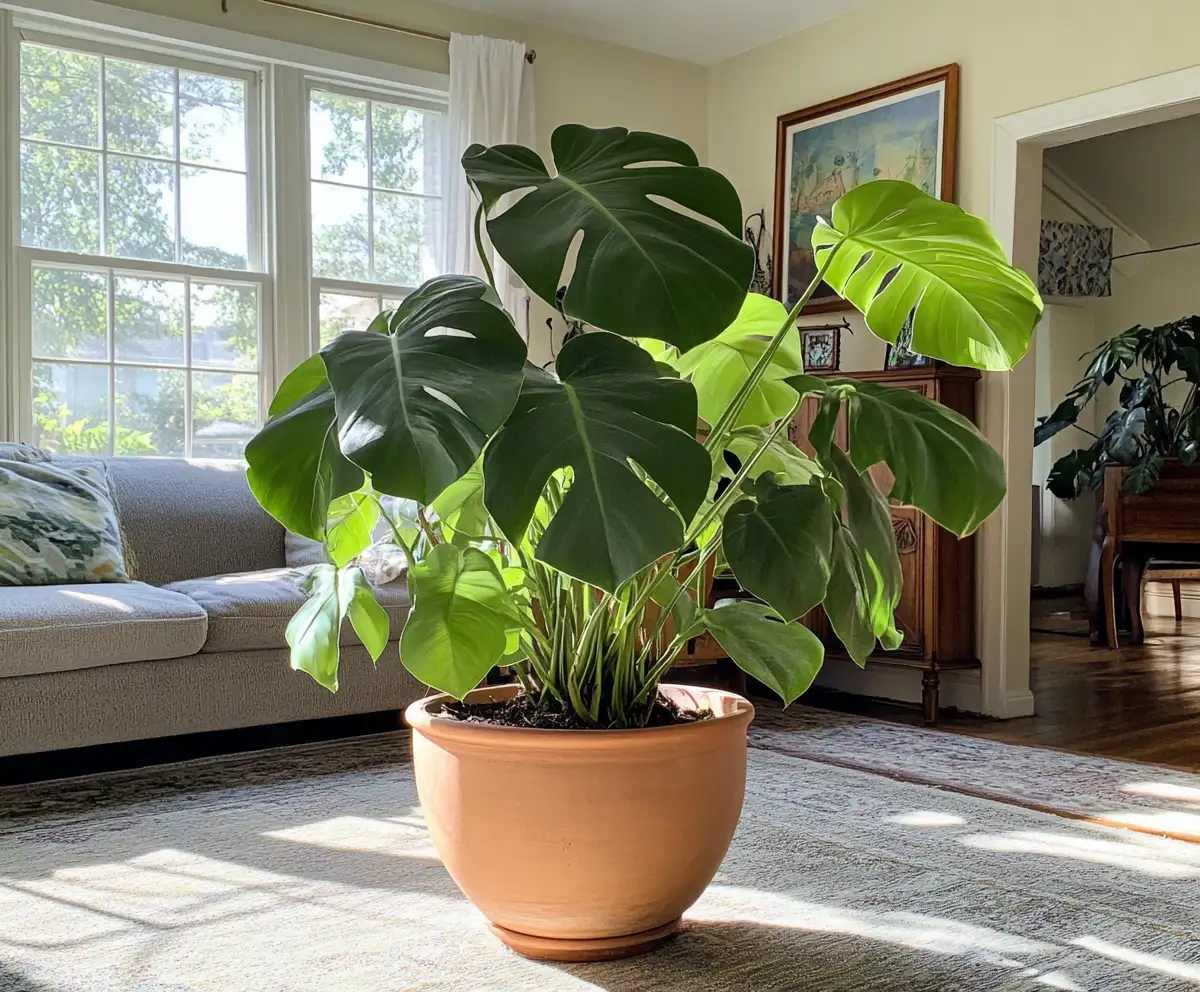
Houseplants for Living Room
Find the perfect houseplants to brighten and purify your living room while adding a touch of nature indoors.
Read More →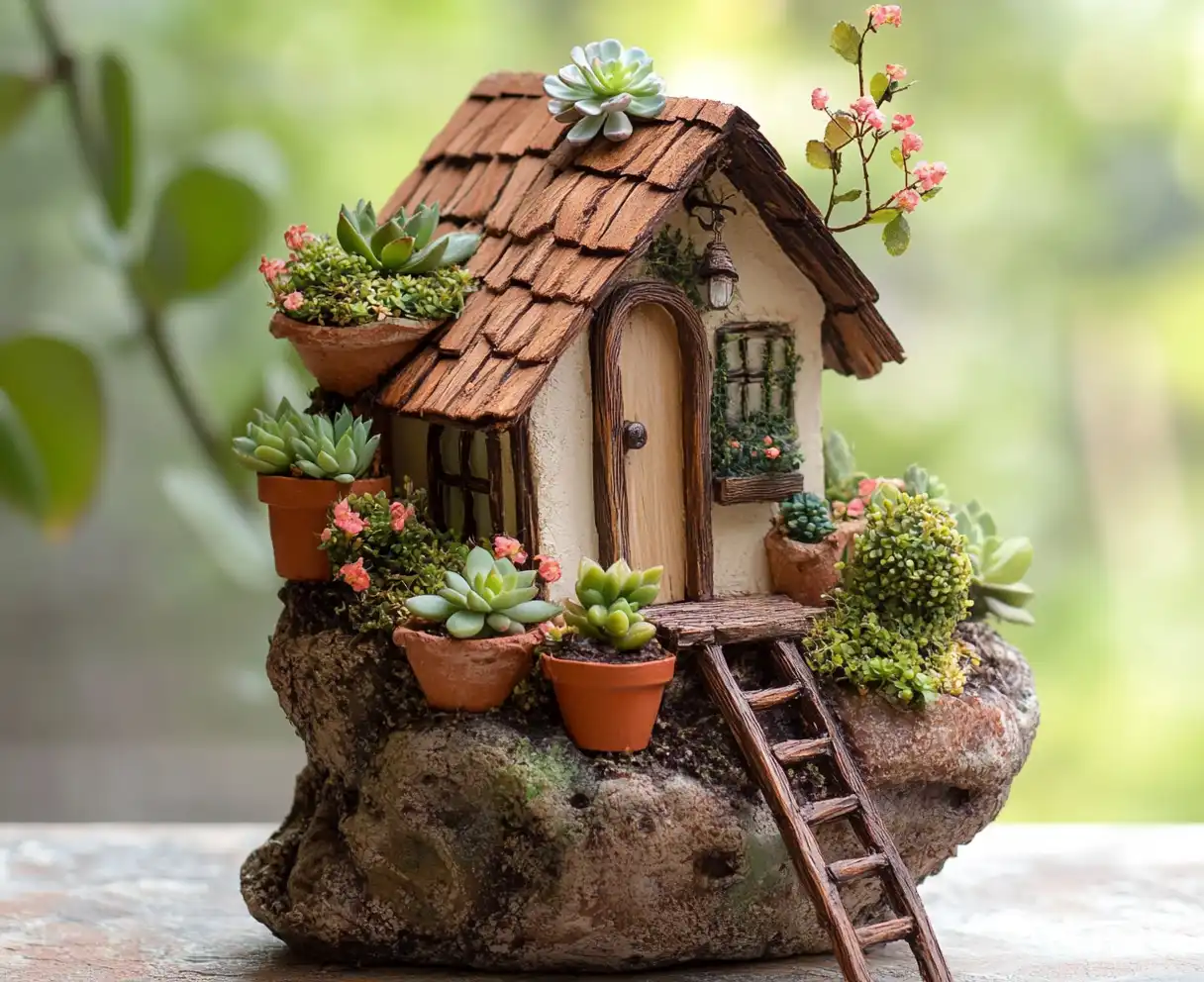
Backyard Play Area for Kids
Create a fun and safe backyard play area for kids with these inspiring design ideas and tips.
Read More →
Top Privacy Trees
Discover top tree varieties that provide natural privacy and enhance your outdoor space.
Read More →
